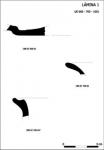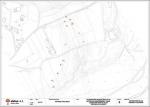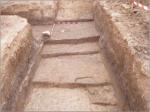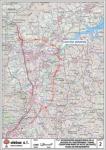Summary (English)
In the area of the quarry of Benamer, affected by the layout of the road, surveys were carried out for an Environmental Impact Report; during those works a large area of ceramic dispersion was detected. Therefore, an archaeological intervention was held which consisted of thirteen surveys. Thanks to them we were able to define two zones with distinct archaeological features for which a separate action was proposed:
- In the Northern Zone (Probes 1, 2, 3, 4 and 8) archaeological remains have been found at a level of the Neolithic period. Survey 3 documented structures, smudges of ash and stone tools and a hand mill.
- In the Southern Zone (Probes 10, 11, 12 y 13), particularly on the western side, remains were also identified on a Neolithic level. Here we have identified different structures like silos and combustion structures, in addition to abundant stone tools.
The polling system used, due to its limited nature, has not allowed pinning down exactly the characteristics of the remains. This fact is emphasized as it is a Neolithic outdoor habitat whose remains are difficult to interpret without a thorough study. However, the cuts of up to 5 meters in height due to the activity of the quarry have been of great help. The readings have helped define the occupancy levels and the various types of structures such as silos, pits and fireplaces.
Considering all these aspects it is evident that an extended archaeological excavation is needed which would provide reliable data and adequate documentation about the existence of habitat structures of the time. Only in this way can we more accurately assess the potential of Prehistoric settlement and clear evidences of the existence of human activity in the Neolithic period.
(translation by Pilar Alarcón Blázquez)
- Israel Espí Pérez
Director
- Eduardo J. López Seguí, Jesús García Guardiola y Palmira Torregrosa Giménez
Team
- Israel Espí Pérez, Laura Guillem Fernández y Fernando Gomis Ferrero
- MARQ, Museo Arqueológico Provincial de Alicante
Research Body
- Alebus patrimonio histórico S.L.
- Colegio Oficial de Doctores y Licenciados en Filosofía y Letras y en Ciencias de Alicante - Sección de Arqueología
Funding Body
- Corsan-Corviam S.A. – Vias y Construcciones S.A. U.T.E.






![Download [PDF]](/excavation/skins/fasti/images/results/download_sml.png)


